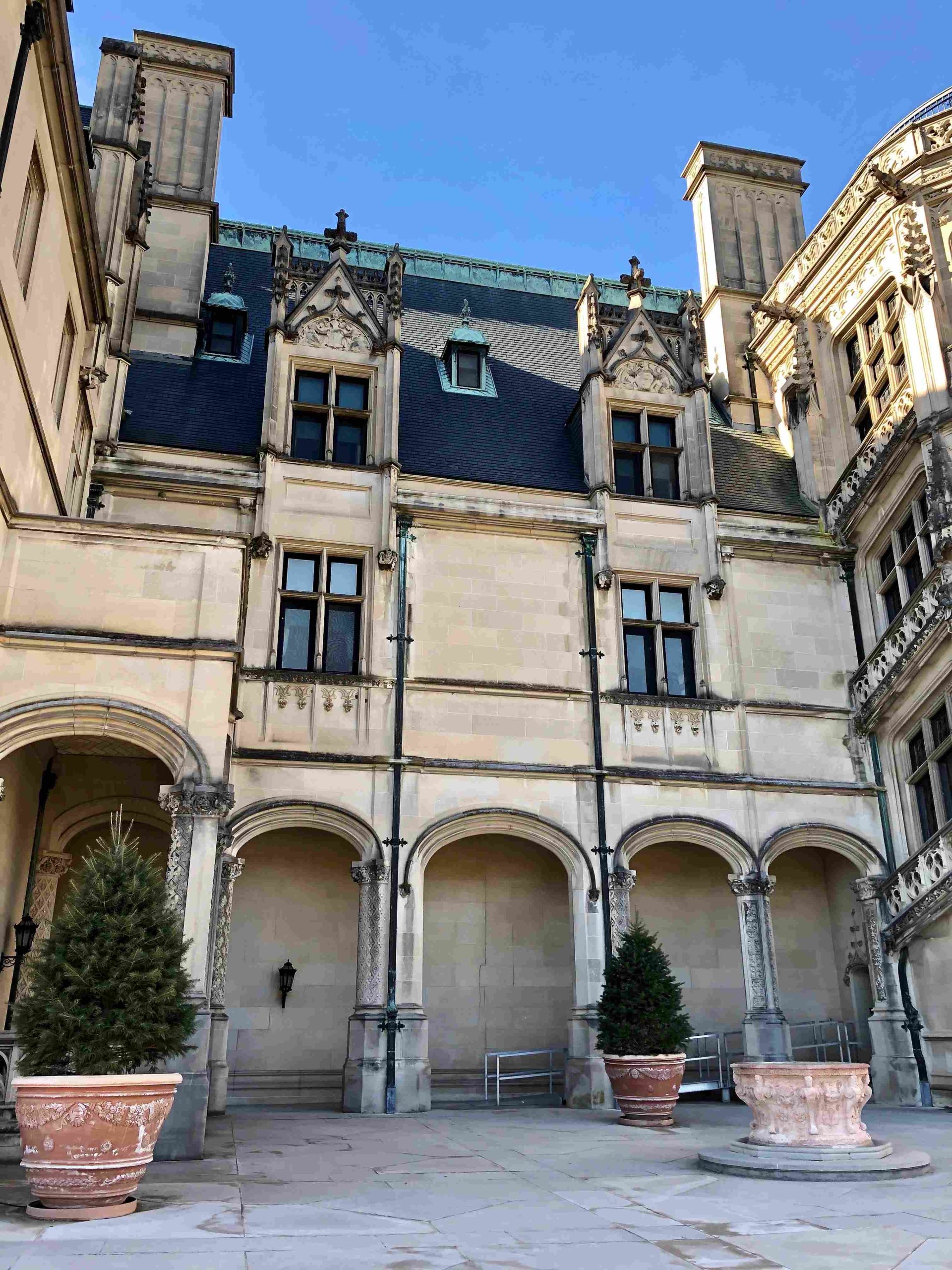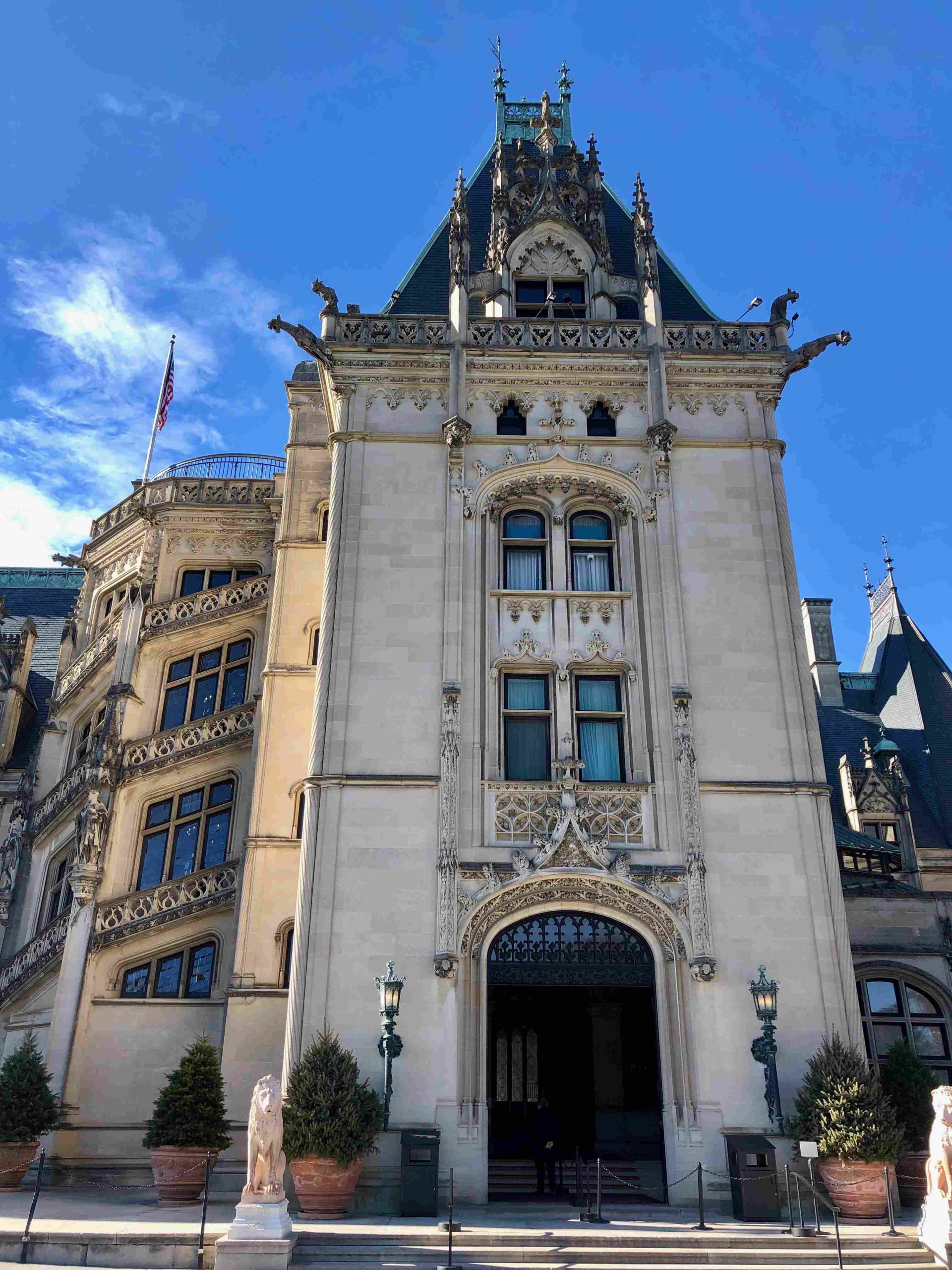The Biltmore Estate, a masterpiece of French Renaissance Revival architecture, stands as a testament to the Gilded Age’s opulence and architectural grandeur. Designed by Richard Morris Hunt for George Washington Vanderbilt III, this 175,000 square-foot mansion draws inspiration from French chateaux, blending medieval and Renaissance elements. Its limestone structure, adorned with intricate details and a steeply-pitched slate roof, showcases the pinnacle of late 19th-century American aristocratic aspirations and European architectural influences.
What Are the Key Architectural Influences on Biltmore Estate?

The Biltmore Estate’s design is heavily influenced by French Medieval and Renaissance architecture, particularly the chateaux of Blois, Chenonceau, and Chambord. This style, often termed Chateauesque or French Renaissance Revival, is evident in several key features:
- Steeply-pitched slate roof
- Limestone structure
- Medieval-style architectural decorations:
- Tracery
- Crockets
- Pointed arches
- Gargoyles
- Grotesques
Additionally, large architectural statues of Joan of Arc and St. Louis by Karl Bitter adorn the exterior, further emphasizing the French influence.
How Does the Interior Design Differ from the Exterior?

While the exterior exudes French Renaissance charm, the interior design takes a different approach:
- More closely related to English manor houses
- Features a cantilevered spiral staircase inspired by Chateau de Blois
- 72-foot-long banqueting hall with an organ
- Massive stone fireplaces
- Tapestries and medieval-style furnishings
- Library with walnut bookcases
- Baroque oil painting on the ceiling by Giovanni Pelligrini
This blend of styles creates a unique architectural experience that sets Biltmore Estate apart from other American mansions of its time.
What Are the Specific Measurements and Materials Used in Biltmore’s Construction?
While exact dimensions of the main façade are not detailed in available sources, we can highlight some key specifications:
| Feature | Specification |
|---|---|
| Total Area | 175,000 square feet |
| Main Structure | Limestone |
| Roof | Steeply-pitched slate |
| Interior Woodwork | Walnut (e.g., library bookcases) |
| Decorative Elements | Stone (fireplaces), various materials for furnishings |
The grand scale and intricate detailing of these features contribute to Biltmore’s architectural significance.
How Did Historical Context Influence Biltmore’s Design?
The design principles of Biltmore Estate reflect the late 19th century’s Gilded Age and the historical context of American aristocracy:
- European Inspiration:
- Richard Morris Hunt’s education at École des Beaux-Arts in Paris
-
Hunt and Vanderbilt’s extended European trip for inspiration and furnishings
-
Architectural Trends:
- Resurgence of historically-inspired styles among American elite
-
Emphasis on grand, European-style designs
-
Cultural Aspirations:
- Reflection of Vanderbilt family’s wealth and status
- Desire to emulate European aristocratic lifestyles
What Challenges Might Visitors Face When Exploring Biltmore Estate?
While specific challenges are not detailed in the sources, visitors should consider:
- Tour Options:
- Self-guided house tours
- Guided tours
-
Special focus tours
-
Transportation:
- On-site parking available
- Shuttle services provided
-
Approach Road designed by Frederick Law Olmsted (often traversed by bus)
-
Time Management:
- Large estate with numerous attractions
-
Planning required to see all areas of interest
-
Accessibility:
- Historic building may present challenges for some visitors
- Consult official Biltmore Estate resources for specific accessibility information
How Does Biltmore’s Landscape Design Complement Its Architecture?
The landscape design of Biltmore Estate, created by Frederick Law Olmsted, plays a crucial role in complementing and enhancing the architectural grandeur of the mansion:
- Approach Road:
- Designed to gradually reveal the mansion
-
Creates a sense of anticipation and awe
-
Formal Gardens:
- Italian Garden with three symmetrical pools
- Walled Garden featuring a mix of annuals and perennials
-
Rose Garden with more than 250 varieties
-
Natural Landscapes:
- Extensive forests and meadows
-
Carefully planned vistas and viewpoints
-
Water Features:
- Bass Pond
- Lagoon
- Streams and fountains
The interplay between the built environment and the natural landscape creates a harmonious and immersive experience for visitors.
What Technological Innovations Were Incorporated into Biltmore’s Design?
Despite its historical appearance, Biltmore Estate incorporated several cutting-edge technologies for its time:
- Electricity:
- One of the first private residences with electric lights
-
Powered by an on-site hydroelectric plant
-
Central Heating:
- Steam heating system throughout the house
-
Innovative for a building of its size
-
Plumbing:
- Modern indoor plumbing systems
-
Multiple bathrooms, a rarity for the time
-
Elevators:
-
Electric and hydraulic elevators for convenience
-
Fire Prevention:
- Built-in fire alarms
- Fireproof construction materials in key areas
These innovations showcase the Vanderbilts’ commitment to combining historical aesthetics with modern comforts.
How Has Biltmore’s Architecture Influenced Modern Design?
While Biltmore Estate is unique in its scale and grandeur, its architectural influence can be seen in various ways:
- Revival of Historical Styles:
- Renewed interest in French Renaissance and Chateauesque designs
-
Inspiration for luxury hotels and resorts
-
Integration of Landscape and Architecture:
- Emphasis on the relationship between built structures and natural surroundings
-
Influence on estate planning and large-scale residential designs
-
Attention to Detail:
- Appreciation for craftsmanship and intricate architectural elements
-
Inspiration for high-end interior design
-
Sustainable Practices:
-
Biltmore’s self-sustaining model has influenced modern eco-friendly estate designs
-
Preservation Techniques:
- Methods used to maintain Biltmore have informed historic preservation practices
The architectural influence of Biltmore Estate extends beyond mere aesthetics, impacting approaches to luxury design, sustainability, and historic preservation in the modern era.
